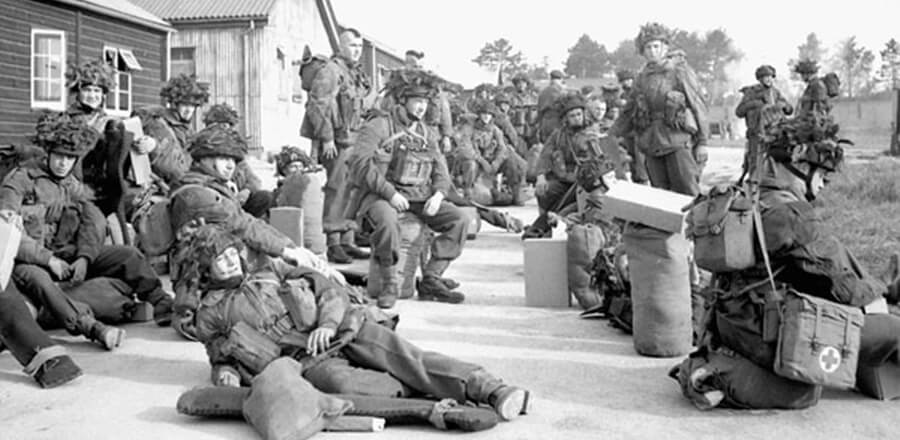
Jour J : Anderson du 1er CDN Para BN
On June 5, 1944, shortly before midnight, nineteen-year-old Raymond Anderson landed in France. A member of the 1st Canadian Parachute Battalion (1 Cdn Para), Anderson had been sent in early to establish the Drop Zone in preparation for his battalion’s role in the D-Day landings. Chosen for the job because it was thought that his aboriginal background would come in handy—he was Métis and extremely skilled in the art of concealment and bushcraft—Anderson’s task was essential for the success of the mission: to secure the eastern flank of the Normandy Coast where the D-Day invasion would take place. It was the 1st Canadian Parachute Battalion’s first combat mission.
Despite Anderson’s preparatory efforts the follow-up parachute drop did not go according to plan. During the very early hours of June 6e the main force of thirty-six, paratrooper-laden, C-47 Dakota aircrafts approached the designated Drop Zone (DZ). Unfortunately, the Dakotas encountered German anti-aircraft gunfire, and they were forced to veer off course. Their detours, in combination with poor visibility, resulted in a situation in which the paratroopers who successfully made the drop found themselves scattered across an area much larger than expected, some of them kilometers away from Raymond Anderson and the DZ that was established by him and his team earlier that night. Eighty-two paratroopers from the main drop were captured by German forces before making it to the DZ while some of those who landed in flooded marshland were drowned by the weight of their equipment (note the postures in the main photo).
Due to these difficulties only a third of the Battalion reached their rendezvous points. Once there, the paratroopers realized that most of their equipment, including their heavy weaponry and explosives, had been lost during the mission. Nonetheless, the paratroopers managed to capture all their objectives and successfully prevented German reinforcements from reaching the beaches and thereby contributed to the Allies’ dramatic victory.

Paratroopers of the 1st Canadian Parachute battalion on a Churchill tank in early 1945 (Credit: Charles H. Richer/ Canada DND/ LAC PA-142610).
« Andy » a survécu à la Seconde Guerre mondiale, a servi en Corée, a vécu une vie longue et fructueuse en tant qu'employé de la province du Manitoba et est décédé en 2016. Lisez son In MemoriamICI.

Two members of the 1 Cdn Para Bn in Germany dug in to shelter from shell and mortar fire, 24 March 1945 (Credit: Charles H. Richer/ Canada DND/ LAC PA-142610).
Pour un autre article de Valor Canada sur notre bataillon de parachutistes le jour J, voirMcLeod du 1 Bataillon de parachutistes canadiens. To learn more about the 1st Canadian Parachute Battalion, visit the Centre Juno Beach.
Ressource d'apprentissage: Feuille de travail des questions et réponses d'Anderson (Taxonomie de Bloom)
Photo principale: Paratroopers of the 1st Canadian Parachute Battalion in a transit camp staging area prior to D-Day, England, ca. 1-5 June 1944 (Credit: Sgt. Elmer R. Bonter/ Canada DND/ LAC PA-114599).

